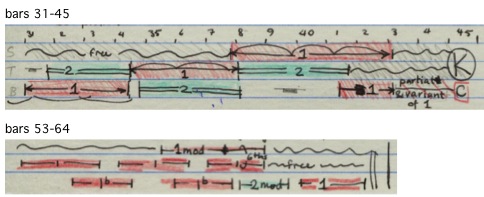Diego Pisador
Fantasía 13, del quarto tono sobre mi la sol mi fa mi
Libro de música para vihuela (1552), fol. 23
pi044
| Source title | Fantasia a tres bozes sobre.Mi la sol mifa mi del quarto tono. Es la claue de cesolfaut la tercera en primer traste. |
|---|---|
| Title in contents | Fantasia a tres bozes del quarto tono, va la boz que se canta señalada de colorado. |
| Text incipit | mi la sol mi fa mi |

Music
Category abstract
Genre fantasia
Fantasia type ImM
Mode 4
Voices 3
Length (compases) 124
Vihuela
Tuning A
Courses 6
Final V/2
Highest I/7
Lowest VI/0
Difficulty not specified
Tempo not specified
Song Text
Language
Vocal notation texted cifras rojas solmised
Commentary
Rubric: Fantasia in three voices on .Mi la sol mi fa mi in mode 4. The C clef is on the third [course] at the first fret.” The entry in the table of contents reminds the vihuelist to sing the ciphers printed in red. It is a monothematic fantasia on the given theme [E–A–G–E–F–E], but with some sub-themes. By choosing an attractive theme, and limiting himself to a three-voice texture, Pisador has created one of his most beautiful and successfui fantasias. He shows thought and insight, and manipulates his materials with dexterity. Thematic use in not as indiscriminate as in many of his fantasias. Using the criterion of thematic treatment, the 62 bar work divides exactly in half at bar 31 (halved bars of the transcription). Then again, the second half divides exactly in half again (at 45.2). The first half is characterised by quite constant imitative use of the cantus firmus, although no complete statement occurs until bar 5. Prior to that only head motives are given as B/S. Coda/cadence on A at bar 31. The second half reveals the use of subsidiary themes. Bars 31-45 shows theme 2 used as a voice pair with the main theme which itself is lengthenened by being given twice or thrice with the last note acting as a pivot. This section is plotted in the diagram attached. The final section, firstly, has no theme 1 statement in S. It begins with interlocking B statements of theme 1 with theme 3 imitated S-T > K (49 on E) > Theme 3 sequence in S > Theme 1 stated three time in the T with theme 1b in B > with motive 1 in S and motive 2 in B, keading to another B statement as K. Diagram from b.53 to end. Good conclusion. Theme begins on E, A, B, G.
